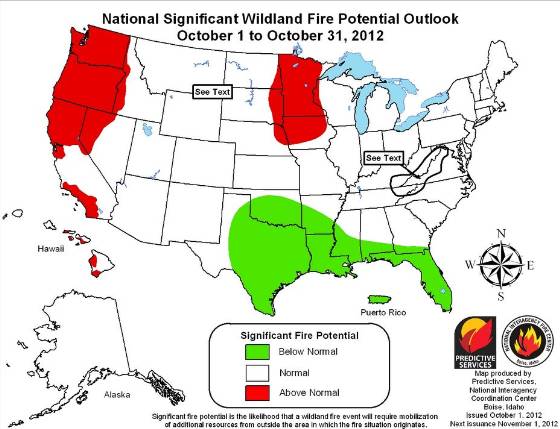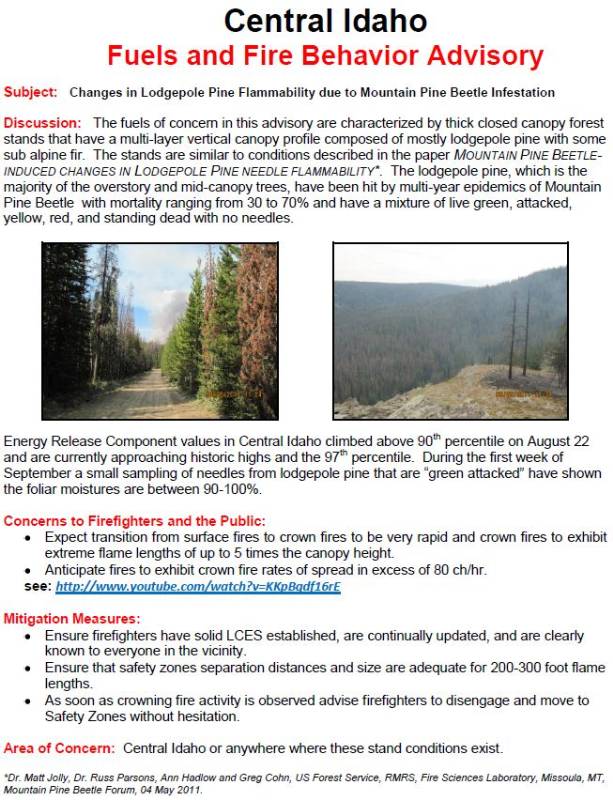The Rocky Mountain Geographic Area and the Upper Colorado River Fire Management Unit on the Colorado Western Slope issued two Fuels and Fire Behavior Advisories today. Below are the complete texts of both:
****
“Fuels and Fire Behavior Advisory
Western Slope of Colorado
06/21/2013
Subject: Western Colorado is in the third year of drought. The situation is predicted to persist or intensify through July. There is increased risk of large fire development and intense fire behavior. Dry, heavy fuels at higher elevations could pose a greater risk of active fire behavior.
Discussion: The wet spring pattern that occurred during April and May has provided a brief reprieve. Live and dead fuel moistures are quickly returning to a condition that will support large fire growth.
Forecasts do not offer the prospect of live or dead fuels conditions improving through July.
Difference from normal conditions: Fuels are described by fire managers as being deceptively green. The visual greenness being observed can lessen the sense of fire potential. Live fuels, which had shown some improvement from late spring precipitation, are drying. On the Western Slope of Colorado, 100FM fuels are setting historically low values for the date, nearing the 3rd percentile, and moving into the range associated with historic large fires. Long-term drying has made large, higher elevation fuels, available as well.
Concerns to Firefighters and the Public:
- Recent large fires on the Front Range and Western Slope have displayed intense and/or extreme fire behavior.
- Long-range spotting, fire whorls, extreme fireline intensity and high winds have been observed and will continue to be control problems on both wildland and urban interface incidents.
- Local preparedness planning and cooperation should be on-going.
- Management of suppression resources rest and recovery as activity increases.
Mitigation Measures: Strategies for dealing with each of the specific circumstances listed above include using Predictive Service¡¦s forecasts of higher potential for large fire occurrence, rapid initial attack in those high risk areas, and daily fire and fuels briefings to suppression personnel.
Continue reading “Two fuels and fire behavior advisories for Colorado”










